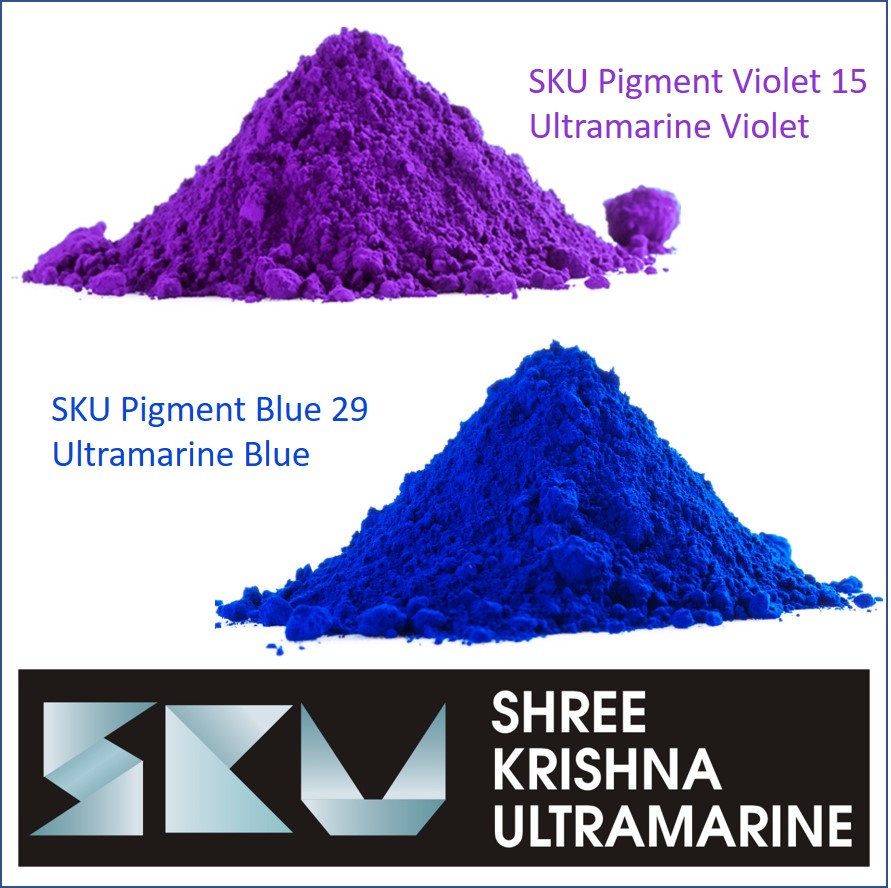Ultramarine Pigments: The Timeless Brilliance of Blue and Violet Shades

For generations, color has defined art, design, and industry. Among the most significant hues, Ultramarine is revered for its depth and richness. Today, companies like SKU Pigments specialize in manufacturing high-quality Ultramarine pigments, including Ultramarine Blue, Ultramarine Violet, Pigment Blue 29, and Pigment Violet. From paints and plastics, Ultramarine has become the backbone of modern blue pigments.
The Journey of Ultramarine Through Time
The name Ultramarine comes from the Latin “ultra mare,” meaning “beyond the sea,” a reference to lapis lazuli originally imported from Afghanistan. For centuries, it was a rare treasure, used by Renaissance masters to illuminate manuscripts. It symbolized purity and heaven.
Modern chemistry made it possible to synthesize Ultramarine pigments, bringing the once-exclusive shade into global industries. This breakthrough turned a luxury color into a accessible solution for countless sectors.
The Versatility of Pigment Blue 29
Ultramarine Blue pigments—the synthetic form of Pigment Blue 29—are industry favorites. Known for their clarity, they are perfect for sensitive applications. They are used in:
• Decorative finishes for durability and brilliance.
• Polymers and rubbers, thanks to UV resistance.
• Fine printing, where clarity is vital.
• Cosmetics, given their non-toxic nature.
This balance of economy and brilliance keeps Ultramarine Blue among the global color leaders.
Exploring the Subtlety of Ultramarine Violet
Ultramarine Violet offers subtle elegance that appeal in specialty coatings. Pigment Violet derived from Ultramarine is highly dispersible, making it ideal for sensitive products.
Its sophisticated tone enhances luxury packaging, while ensuring durability without chemical breakdown.
Pigment Blue in Modern Industries
Pigment Blue—particularly Ultramarine Blue pigments—remains a core pigment. It offers weather resistance for:
• Car finishes with brilliant sheen.
• Consumer goods, ensuring stable shades.
• Construction materials, adding beauty and durability.
This cross-sector utility ensures Pigment Blue’s dominance.
Advantages of Ultramarine Pigments
• Non-Toxic & Safe: Ideal for cosmetics and toys.
• Heat & Light Resistant: Colors don’t fade under UV.
• Eco-Friendly: Manufactured with sustainability.
• Cost-Effective: Budget-friendly industrial choice.
• Versatile: Applicable everywhere color matters.
Applications Across Sectors
1. Paints & Coatings: Durable architectural shades.
2. Plastics & Rubber: Stable in polymers.
3. Cosmetics: Luxury formulations.
4. Construction: Flooring products.
5. Printing & Inks: Sharp colors for publishing.
The SKU Pigments Advantage
SKU Pigments leads the market, offering eco-conscious solutions in Ultramarine pigments. Their product portfolio includes:
• Pigment Blue 29 for vibrant, bold applications.
• Ultramarine Violet and Pigment Violet for luxury tones.
• Custom shades for tailored Ultramarine Violet applications.
Their reputation is built on customer satisfaction and eco-friendly production.
Ultramarine: From Heritage to High-Tech
From a rare treasure to an eco-friendly modern solution, Ultramarine has remained relevant for centuries. Whether it’s the classic brilliance of Ultramarine Blue, the subtle elegance of Ultramarine Violet, or the stability of Pigment Blue 29, Ultramarine pigments remain unrivaled.
With SKU Pigments as a leading manufacturer, industries gain beauty, safety, and performance. As demand for non-toxic pigments rises, Ultramarine will remain dominant in global markets.
Common Queries About Ultramarine
1. What is Ultramarine?
A vibrant pigment from lapis lazuli, now produced synthetically.
2. What is Pigment Blue 29?
A widely used industrial pigment.
3. Where is Ultramarine Violet used?
In eco-friendly and children’s products.
4. Are Ultramarine pigments safe?
Yes, non-toxic and eco-friendly.
5. Why choose SKU Pigments?
Because of quality, eco-focus, and range.